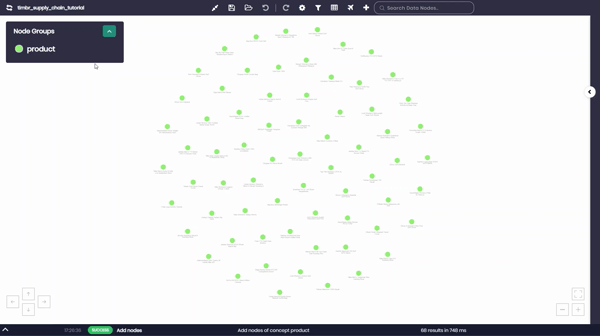ontologies for AI & ML
LangGraph
When LangGraph-enabled agents need to query structured data, they often hit obstacles: broken SQL, inconsistent logic, and ungoverned access.
Timbr solves these challenges by connecting LangGraph directly to SQL ontologies enabling agents to reason over data using reusable concepts, governed metrics, and semantic relationships, so workflows stay reliable, explainable, and secure from step one to step done.
Timbr LangGraph SDK
The Timbr LangGraph SDK extends LangChain’s agent orchestration with ontology-aware data access. It lets developers inject Timbr-native SQL reasoning into each step of a LangGraph DAG, enabling agents to query governed, structured data with accuracy, security, and context, without building custom interpreters or manually defining logic.
Timbr Helps Solve Challenges in LangGraph
| Challenge | How Timbr Helps |
|---|---|
| Multi-step agents lose context in SQL workflows | Timbr preserves semantic consistency across all agent steps |
| SQL queries break on schema changes or bad JOINs | Timbr abstracts tables as reusable concepts with defined relationships |
| Agents return inconsistent results | Governed metrics and filters ensure logic is standardized |
| Governance is hard to enforce in agent chains | Timbr applies access policies at every step, automatically |
Ontologies + LangGraph:
A Powerful Combination
When LangGraph meets Timbr’s SQL ontology, structured reasoning becomes:
- Composable: Ontology concepts are modular building blocks for multi-step agents.
- Explainable: Every step’s logic is transparent and grounded in defined semantics.
- Reusable: Metrics, filters, and joins are defined once and applied across the DAG.
- Reliable: Agents adapt to schema changes without rewriting prompts or logic.
- Secure: Governance policies are enforced throughout the workflow lifecycle.
This fusion lets LangGraph scale from prototype agents to enterprise-grade systems with confidence.
Why LangGraph Needs Timbr
| Without Timbr | With Timbr |
|---|---|
| Agents write raw SQL over brittle schemas | Agents operate on semantically enriched data models |
| Logic is duplicated across steps | Concepts and metrics are reused via the semantic layer |
| Business users can't validate agent behavior | Transparent models enable trust and reviewability |
| Governance requires extra layers | Timbr enforces governance natively at query time |
Use Cases
Multi-step Q&A with memory
Agents can retrieve data across concept hierarchies and relationships without redefining logic at each step.
AI copilots for enterprise workflows
Support planning, compliance, or customer operations with agents that query structured data using trusted, explainable steps.
Data validation chains
Use agents to audit structured datasets against semantic rules and metrics before triggering downstream actions.
Semantic planning agents
Empower agents to plan and execute goal-driven tasks using the meaning encoded in Timbr’s ontologies.
